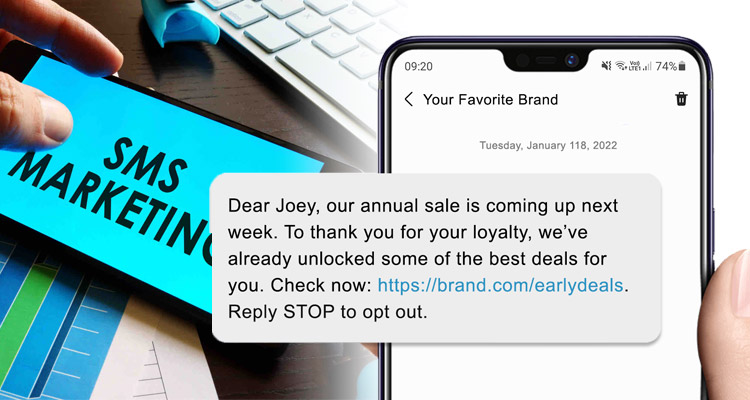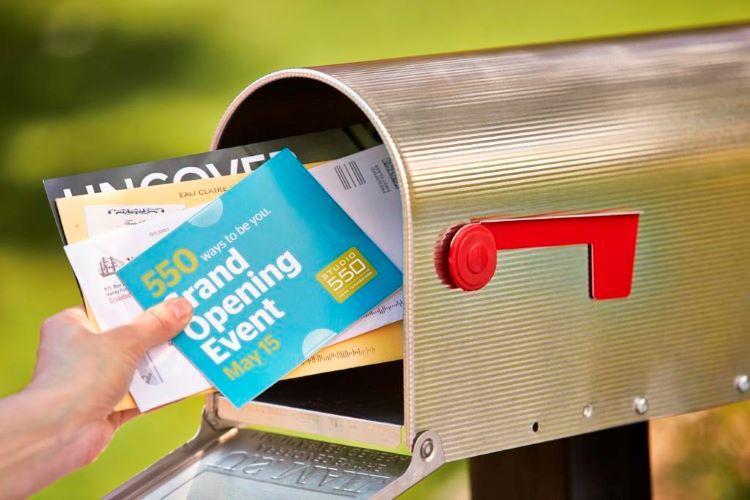Sometimes, the direct approach is the best.
Sure, indirect marketing approaches such as optimising your SEO can help grow your business steadily and sustainably. But let’s face it, your company still needs steady cash flow. Sometimes, you just need to make a sale (or several).
This is where direct marketing comes in. Instead of going through platforms like social media channels or blogs, you’ll communicate directly with customers with the intent of selling a product or service.
Lots of business owners shy away from direct marketing as it can quickly turn intrusive. However, if you do it right, it can prove to be a pretty useful tool in growing your revenues.
You see, it all comes down to using the right mix of direct marketing activities, such as:
1.) Direct advertising.

While this can refer to Facebook ads (which rely on the social media platform), they still count as direct marketing since you can choose which audience to target. Furthermore, interested clients would be contacting you directly when they click on the ad rather than through a third party.
Fortunately, putting up an FB page is free, which you can promote across your socials to get traction. You can eventually use that to launch paid ads, which you can calibrate to target the right demographic for your product or service. You can even choose their geographical location to further increase your chances of reaching potential customers as well.
2.) Email marketing.

Yep, email marketing is still very much alive and kicking.
There are two kinds of email marketing: inbound and outbound. The former involves e-mailing people who have opted to get updates, while the latter relies on a list of email addresses of people who may be interested in your business. (Business owners typically purchase such a list, or you can use lead magnets to generate one.)
Email marketing can also make use of several formats, depending on the purpose. Newsletters, seasonal offers, and referral programs are all examples of such.
However you conduct your email marketing campaign, it should meet three requirements so that you don’t inadvertently breach the Spam Act of 2003:
- ) Each recipient must give their explicit permission for you to send them emails.
- ) You must indicate your business name and contact details in each email, and the content must be related to your business.
- ) There should be a clear option to unsubscribe in each email. (And once a recipient unsubscribes, you must immediately remove them from your list.)
3.) SMS blasts.

Perhaps one of the most cost-effective ways to reach a large audience, SMS blasts are great for people of all ages. These days, most people are almost always on their phones and are bound to see SMS messages more frequently than emails.
SMS blasts also have a variety of uses:
- Sales and promotional alerts. Great for reminders about upcoming sales and discounts.
- Booking reminders. Also an excellent way to reduce or lessen no-shows.
- Follow-ups and updates. Think follow-up information after a call, including website links, promo codes, and relevant contact details.
- Personalised messages. Birthday greetings, anniversary wishes, etc., which are all perfect for long-time clients with whom your business has established relationships with.
As with email marketing, the recipients of your SMS blasts should:
- Give explicit permission for you to send them such messages;
- Only receive messages with content related to your business;
- Have the option to unsubscribe.
4.) Direct mail.

Yep, you can still target your audience through *gasp!* post.
Print publications often go for this route, but you can also have AusPost or other couriers to deliver the following to valued clients or leads:
- Letters and postcards.
- Packages like gift boxes or hampers.
- Product catalogues or seasonal magazines.
- Leaflets and brochures.
Do take note that this approach involves handling sensitive information such as addresses, names, and contact details. Thus, you will need to comply with Australian Privacy Principles to safeguard these.
5.) Telemarketing.

This is perhaps the most unpopular direct marketing approach. (Who likes hearing from telemarketers, right?) However, it’s also more personal than email and allows for very sophisticated targeting.
Examples of telemarketing include:
- Cold-calling. Calling people who may have shown interest or purchased from your business.
- Sales follow-ups. Responds to a customer’s direct inquiries on your website or social media platform.
- General follow-up. Periodically done with regular customers.
Whatever you do, don’t target people on the Do Not Call register. Otherwise, you risk incurring heavy fines.
Just to be clear, we’re not saying you should leave off indirect marketing practices entirely. Often, each company will have a unique mix of direct and indirect marketing practices that work best for them. It just takes a bit of trial and error to figure out what will suit yours best.
Or you can simply hire professionals to do it for you.
Remote Staff has been helping AU entrepreneurs and business owners scale their enterprises with the help of skilled Filipino remote workers since 2007. Whether you need copywriters to provide high-converting copy for your email marketing funnels, seasoned telemarketers to pitch to your potential customers, or an entire digital marketing team, we’ve got you covered.
Call us today or schedule a call back and let’s get started.
Serena has been working remotely and writing content for the better part of the last decade. To date, she's written for Pepper.ph and Mabuhay Magazine, among others, and has churned out more than a thousand articles on everything from The Basics of Stock Market Investing to How to Make Milk Tea-Flavored Taho at home. Hermits, aspiring hermits, and non-hermits with interesting project propositions may email her at serena.estrella10@gmail.com.
























 Zero Recruitment Fee
Zero Recruitment Fee